39 reading food labels cholesterol
How To Read Food and Beverage Labels - National Institute on Aging At the top of the Nutrition Facts label, you will find the total number of servings in the container and the food or beverage's serving size. The serving size on the label is based on the amount of food that people may typically eat at one time and is not a recommendation of how much to eat. Read more about serving and portion sizes. › nutritionsource › food-labelUnderstanding Food Labels | The Nutrition Source | Harvard T ... Chile implemented the Law of Food Labeling and Advertising in 2016, comprised of mandatory front-of-package (FOP) warning labels, restrictions on child-directed marketing, and the banning of sales in schools of all foods and beverages containing added sugars, sodium, or saturated fats that exceeded set nutrient or calorie thresholds. [1]
› food-labels-worksheet6 Free Printable Food Labels Worksheet & Different Types The food labels worksheet PDF is used to help identify the total calories, serving size, number of servings in a package, and the nutrition information on food packaging. Reading food labels worksheet. Reading food labels is an exercise in making decisions and balancing priorities.
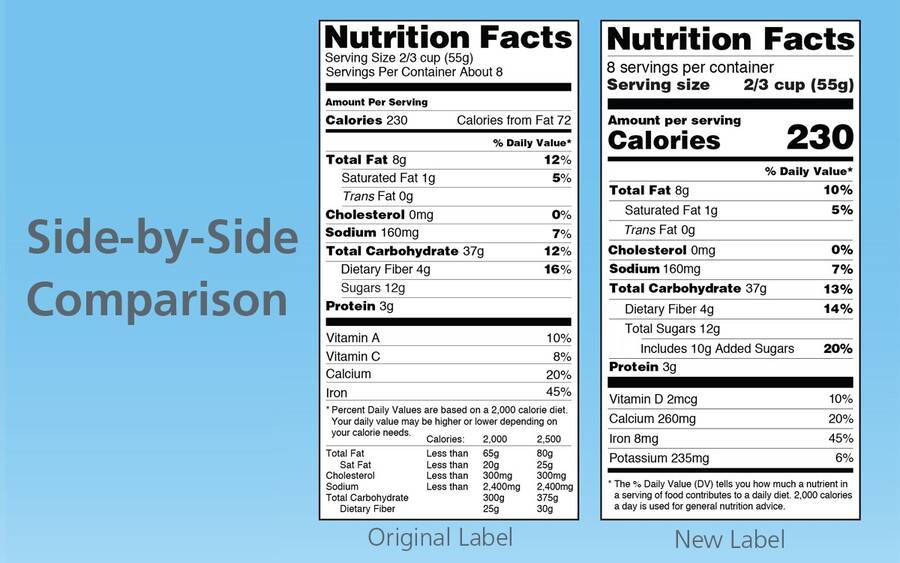
Reading food labels cholesterol
› how-to-read-food-labelsHow to read food labels | healthdirect Saturated fats are linked to an increased risk of heart disease and high blood cholesterol, so it is especially important to choose foods low in saturated fat. Carbohydrate (total): Carbohydrates are found in all fruit and vegetables, all breads and grain products, and sugar and sugary foods. You need carbohydrates for energy. Click to open PDF. Food labels - NHS These labels provide information on the number of grams of fat, saturated fat, sugars and salt, and the amount of energy (in kJ and kcal) in a serving or portion of the food. But be aware that the manufacturer's idea of a portion may be different from yours. Some front-of-pack nutrition labels also provide information about reference intakes. How to Read Food Labels for a Heart-Healthy Diet Partially hydrogenated oil Omega-3 fatty acid Olive oil Butter What's important to know about the first ingredient listed on a label? It's the healthiest. It's in the largest quantity. It's first due to alphabetical order. What words should I look out for that mean sugar? High-fructose corn syrup Agave nectar Dehydrated cane juice All of the above
Reading food labels cholesterol. 6 Free Printable Food Labels Worksheet & Different Types Reading food labels is an exercise in making decisions and balancing priorities. The purpose of this reading food labels worksheet is to help you become familiar with the different content listed on food labels and the corresponding regulations. Tips for creating a food labels worksheet. Some specific rules and laws need to be followed on a food labels worksheet. A food labels … How to Read Nutrition Labels: Fat Content, Carbs & What To Look For They can be labeled as 0 grams if they contain less than 0.5 grams per serving, but another clue that a product is made with trans fats, is if the ingredient list includes "partially hydrogenated oil." Cholesterol Cholesterol is a fatty like substance which comes from animal foods only. Understanding Food Labels | The Nutrition Source | Harvard T.H. Chile implemented the Law of Food Labeling and Advertising in 2016, comprised of mandatory front-of-package (FOP) warning labels, restrictions on child-directed marketing, and the banning of sales in schools of all foods and beverages containing added sugars, sodium, or saturated fats that exceeded set nutrient or calorie thresholds. [1] Reading Food Labels | Saint Luke's Health System Reading Food Labels. Look for the Nutrition Facts label on packaged foods. Reading labels is a big step toward eating healthier. The tips below help you know what to look for. ... But many foods high in cholesterol are also high in saturated fat. So it is recommended to limit saturated fat in your diet. Calories from fat.
How to Read Nutrition Labels - Frederick Health These are the essentials: Serving Information (top of the label): The number of servings in the package or container and the serving size. The serving size is the amount that people typically eat or drink— not how much you should eat or drink. Calories (second on the label): A measure of how much energy you get from a serving of the food. How to read food labels - Heart Foundation NZ The star rating is calculated using an algorithm that takes into consideration a number of positive and negative nutrients for a particular food. The positive elements include protein, fibre, fruit, vegetable, nut, seed and legume content. The negative elements include energy, sodium, saturated fat, and sugar. Reading Exercise - Trans Fats | EnglishClub Reading the list of ingredients on the label is a good way of avoiding dangerous ingredients like trans fats. Another way is to avoid eating out, especially in fast food restaurants. Also, when shopping try to buy the majority of your food in the fresh-food section and limit the amount of processed and packaged food you buy. You might not think ... How To Read Food Labels - 10 Tips - Pritikin Weight Loss Resort Here are the basics for how to read food labels, consolidated into 10 quick-reference tips, compliments of Kimberly Gomer, Director of Nutrition at the Pritikin Longevity Center in Miami, Florida. These 10 tips are all about helping you shed excess weight, take good care of your heart, and live well. 1.
The Basics of the Nutrition Facts Label - Academy of Nutrition and ... 04.03.2022 · Low is 5% or less. Aim low in saturated fat, trans fat, cholesterol and sodium. High is 20% or more. Aim high in vitamins, minerals and dietary fiber. Step 4: Check Out the Nutrition Terms. Low calorie: 40 calories or less per serving. Low cholesterol: 20 milligrams or less and 2 grams or less of saturated fat per serving. › food › new-nutrition-facts-labelHow to Understand and Use the Nutrition Facts Label | FDA Feb 25, 2022 · People look at food labels for a variety of reasons. ... The following label-reading skills are intended to make it easier for you to use the Nutrition Facts labels to make quick, informed food ... Food Labels: Fat & Cholesterol | Home & Garden Information Center The 2015 Dietary Guidelines for Americans recommends the following intakes of fat and cholesterol every day: total fat—20 to 35% of calories, depending on age and gender (65 grams for the 2,000-calorie intake level used in the Daily Value)* saturated fat—less than 10% of calories** trans fat— keep as low as possible How-To Guide for Reading Food Labels - The Society for Cardiovascular ... When reading labels, it may be helpful to remember that cholesterol only comes from animal products. You may also see "0 grams" of cholesterol and at first think a product is healthy, but that product may still be high in saturated fat and trans fat. Sodium - Sodium is listed on the label in milligrams.
Reading and Understanding Food Labels and Nutrition Info - Beaumont Health A one-percent reduction of saturated fat in your diet reduces your heart disease risk by three percent. Keep saturated fat to less then 15 grams per day. It is not required to list unsaturated fats (polyunsaturated and monounsaturated) on food labels. In general, unsaturated fats lower cholesterol. The healthiest unsaturated fat is canola oil.
How to read food labels | healthdirect Sugar: Sugar is a type of carbohydrate. It is better to choose healthier carbohydrates and to limit foods that are high in added sugars. Fibre: High fibre foods such as wholegrain bread and cereals improve digestion and help you to feel full. Sodium: This tells you how much salt the product contains. Eating too much salt is linked to high blood pressure and can lead to heart disease, …
Your Guide to the New Food Label | National Kidney Foundation Food labels have percent daily values listed for a set group of nutrients based on the Food and Drug Administration (FDA) recommended 2000 calorie diet. You may need more or fewer calories, so check with your kidney dietitian. Using the daily percent values and ingredients listed, you’ll be able to choose foods within your special diet needs.
How to Read Nutrition Labels - Roswell Park Comprehensive Cancer Center This is where knowing how to properly read nutrition labels can come in handy. At a minimum, the 'Nutrition Facts' label must contain the amount of total fat, saturated fat, trans fat, cholesterol, sodium, total carbohydrates, dietary fiber, sugar, protein, vitamin A and C, calcium, and iron in one serving. Here's the top five things to look ...
Reading Food Labels - What You Need to Know - Drugs.com Care guide for Reading Food Labels. Includes: possible causes, signs and symptoms, standard treatment options and means of care and support. ... "Reduced" or "less" fat: At least 25 percent less fat, when compared to a similar food. Cholesterol: "Cholesterol free": Less than two mg of cholesterol per serving. "Low cholesterol": Twenty (20) ...
How to Read the New Food Label - The Johns Hopkins Patient Guide to ... Try the 5/20 rule when reading a label. Think about 5% or less as low for any nutrient and 20% or more is high for any nutrient. The %DV is a great way to compare food products if the serving size is the same. Fiber is the nutrient on the label that you want to aim for a high %DV. Ingredient list
How to Read the Nutrition Facts Label on Packaged Foods - WebMD Limit salt to 2,300 milligrams (about 1 teaspoon) daily. If you have high blood pressure, kidney disease, or diabetes, or are African-American or older than 51, your daily limit is lower: 1,500...
› en › healthy-livingUnderstanding Ingredients on Food Labels | American Heart ... Mar 06, 2017 · These fats raise your bad cholesterol (LDL) and decrease your good cholesterol (HDL). Some experts say you should choose foods with five or fewer ingredients. While this “five-limit rule” has gotten a lot of attention lately, Kris-Etherton said there’s no reason to complicate your label reading to this degree.
Cholesterol Lowering Foods List (September, 2022) - Easy Recipe … Check labels to ensure that the meats you choose are at least 96% fat free, and be sure to trim any visible fat before cooking. Pay close attention to serving sizes, and aim for no more than five ounces of fish- or animal-based protein per day. Antelope, lean cuts; Beef round, preferably grass-fed; Beef sirloin, preferably grass-fed; Beef tenderloin, preferably grass-fed; Beefalo, lean cuts ...
How To Read Nutrition Labels - Mayo Clinic Diet Aim for low in saturated fat, trans fat, cholesterol, sodium, and added sugars. High is 20% or more. Aim high in vitamins, minerals and dietary fiber. 4. Check the ingredients Ingredients are listed by volume. The higher up on the list an ingredient is, the more of it the product contains. Make sure sugar isn't one of the first ingredients listed.
diabetes.org › making-sense-food-labelsMaking Sense of Food Labels | ADA - American Diabetes Association Trying to figure out nutritional information on labels and packaging isn’t easy. The good news is that we can help. These food labels are especially helpful if you use carb counting to plan your meals! If you get tripped up on food content claims, you’re not alone. Fat free vs. low fat vs. reduced fat. Low cholesterol vs. reduced cholesterol.
Reading food labels: Tips if you have diabetes - Mayo Clinic Look for foods with fats, cholesterol and sodium on the low end of the Daily Value; keep fiber, vitamins and minerals on the high end. If your doctor or registered dietitian recommends more or less than 2,000 calories a day, you may need to adjust the percentage accordingly — or simply use the percentage as a general frame of reference.
Understanding Ingredients on Food Labels - American Heart … 06.03.2017 · Food labels are an important source of information about calories and the nutritional value of the foods you eat, a crucial tool in building a heart-healthy diet. The Nutrition Facts information is always displayed in the same orderly fashion and helps you understand how much of certain nutrients that you need to limit are contained in the product per serving.
Easy Guide to Understanding Food Labels When You Have High Cholesterol ... This means that your food may contain trans-fat even if the food label says 0 gram. Therefore it's important to check the ingredient list (more on this later). Cholesterol guidelines currently recommend having not more than 300 milligrams of cholesterol per day, and if you have heart disease, aim for less than 200 milligrams per day. 2.
How to Read Food Labels Without Being Tricked - Healthline This label says very little about whether a product is healthy. For example, organic sugar is still sugar. No added sugar. Some products are naturally high in sugar. The fact that they don't have...
Reading Food Labels | ADA - American Diabetes Association The Nutrition Facts labels on foods are really the key to making the best choices. We'll cover the basics so that these labels make shopping easier for you. You've heard it all. From carb-free to low-carb, to whole and empty carbs, it's hard to know what it all means. Blood sugar highs and lows aren't always easy to understand.
Reading Food Labels - Women's Heart Foods with soluble fiber can help to lower blood cholesterol. Aim for 25-30 grams of fiber a day, 1/4 of which should consist of soluble fiber and 3/4 from insoluble fiber. Soluble fiber is found primarily in oats, beans, fruits and vegetables. Read the food label for content of both soluble and insoluble fiber.
How to Understand and Use the Nutrition Facts Label | FDA - U.S. Food … 25.02.2022 · The following label-reading skills are intended to make it easier for you to use the Nutrition Facts labels to make quick, informed food decisions to help you choose a healthy diet.
› atoz › contentYour Guide to the New Food Label | National Kidney Foundation Many people with kidney disease are on low fat and low cholesterol diets, so be sure to look at the fat and cholesterol daily values. Look for: foods with less than 10% daily value of saturated fat ; foods with less than 7% daily value of cholesterol. lean or extra-lean meat with 7.5 to 15% daily value of total fat
PDF How do I read food labels? - American Heart Association read the Nutrition Facts labels on the foods you purchase. Compare the nutrients and calories in one food to those in another. The information may surprise you. Make sure you ... • Cholesterol — is found in foods that come from animals, such as meats, poultry, seafood, eggs and full-fat dairy products. The FDA's Dietary Guidelines
How to Tell if Foods Are Low or High Cholesterol - Verywell Health Each food label should include milligrams (mg) of cholesterol per serving. Don't forget to look at the serving size as well. Sometimes products can seem low in cholesterol, but if you eat more than the recommended servings at one sitting, then you can end up consuming a lot more cholesterol than you intended.
Understanding Food Nutrition Labels | American Heart Association 1 - Start with the serving information at the top. This will tell you the size of a single serving and the total number of servings per container (package). 2 - Next, check total calories per serving and container. Pay attention to the calories per serving and how many calories you're really consuming if you eat the whole package.
How to read food labels: MedlinePlus Medical Encyclopedia If a label says that a food has 100 mg of sodium, this means it has about 250 mg of salt. You should eat no more than 2,300 mg of sodium per day. This is the amount of sodium that is in 1 measuring teaspoon of table salt. Ask your health care provider if you should have even less. The % daily value is included on the label as a guide.
PDF How to Read the Food Label - University of California, Santa Cruz Cholesterol. Cholesterol is in foods from animal sources, such as meats, poultry, fish, eggs, and dairy. Try to keep your cholesterol intake to less than 300 milligrams (mg) per day. A low-cholesterol food has less than 20 mg per serving. Sodium. Too much sodium (salt) may raise your blood pressure. Less than 2,300 mg of sodium each day . is ...
PDF A Guide to Reading Food Labels - University of Rochester Food Labels Reading food labels can help you make wise food choices. Most foods list nutrition information on the package label, called Nutrition Facts. ... They may raise your blood cholesterol level, which can increase your risk of heart disease. Choose foods containing less than 10% of calories from saturated fat.
Making Sense of Food Labels | ADA - American Diabetes … Trying to figure out nutritional information on labels and packaging isn’t easy. The good news is that we can help. These food labels are especially helpful if you use carb counting to plan your meals! If you get tripped up on food content claims, you’re not alone. Fat free vs. low fat vs. reduced fat. Low cholesterol vs. reduced ...
How To Read Cholesterol Labels - HealthyCholesterolClub.com Eating too much unhealthy fat saturated and trans fats can increase your risk for heart disease, high cholesterol, obesity, high blood pressure, type 2 diabetes, and cancer. Saturated fat comes mainly from meat, poultry with skin, whole milk dairy products, coconut and palm kernel oils, and stick margarine.
How to Read Food Labels for a Heart-Healthy Diet Partially hydrogenated oil Omega-3 fatty acid Olive oil Butter What's important to know about the first ingredient listed on a label? It's the healthiest. It's in the largest quantity. It's first due to alphabetical order. What words should I look out for that mean sugar? High-fructose corn syrup Agave nectar Dehydrated cane juice All of the above
Food labels - NHS These labels provide information on the number of grams of fat, saturated fat, sugars and salt, and the amount of energy (in kJ and kcal) in a serving or portion of the food. But be aware that the manufacturer's idea of a portion may be different from yours. Some front-of-pack nutrition labels also provide information about reference intakes.
› how-to-read-food-labelsHow to read food labels | healthdirect Saturated fats are linked to an increased risk of heart disease and high blood cholesterol, so it is especially important to choose foods low in saturated fat. Carbohydrate (total): Carbohydrates are found in all fruit and vegetables, all breads and grain products, and sugar and sugary foods. You need carbohydrates for energy. Click to open PDF.
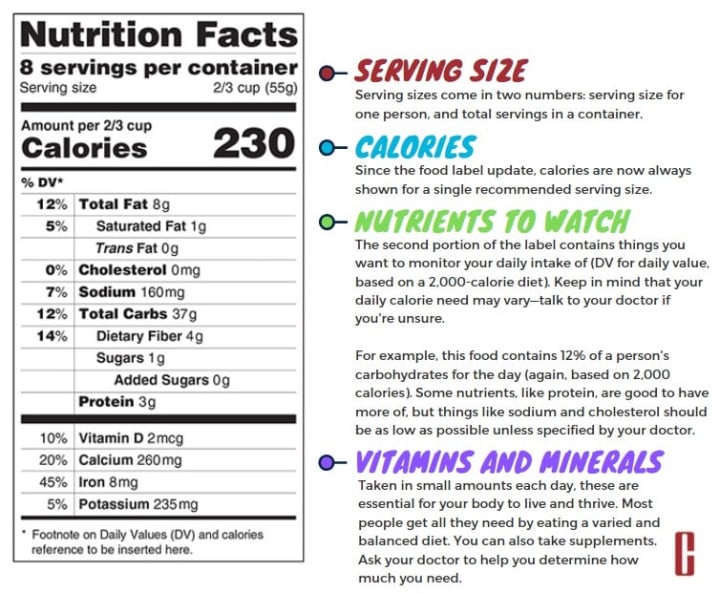





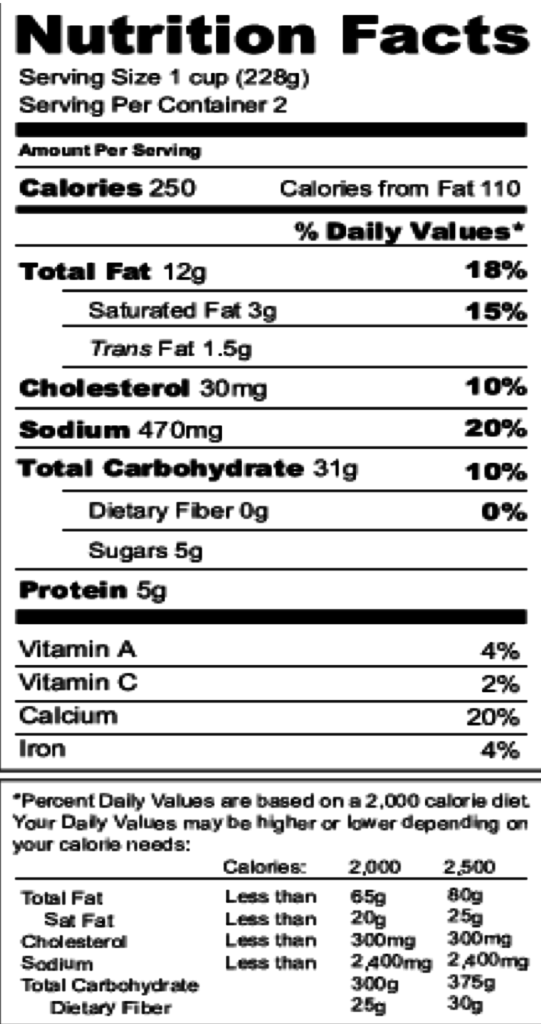
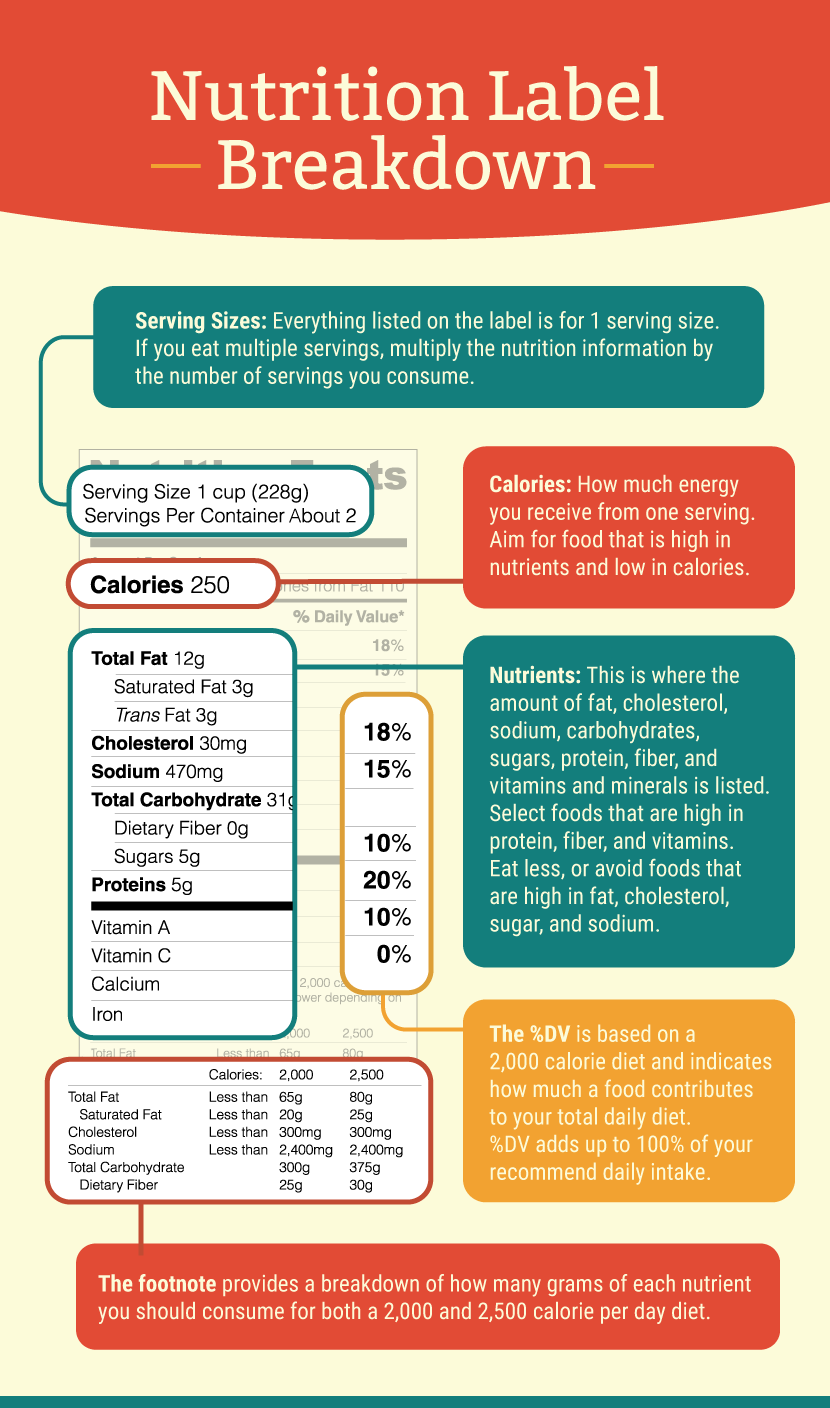




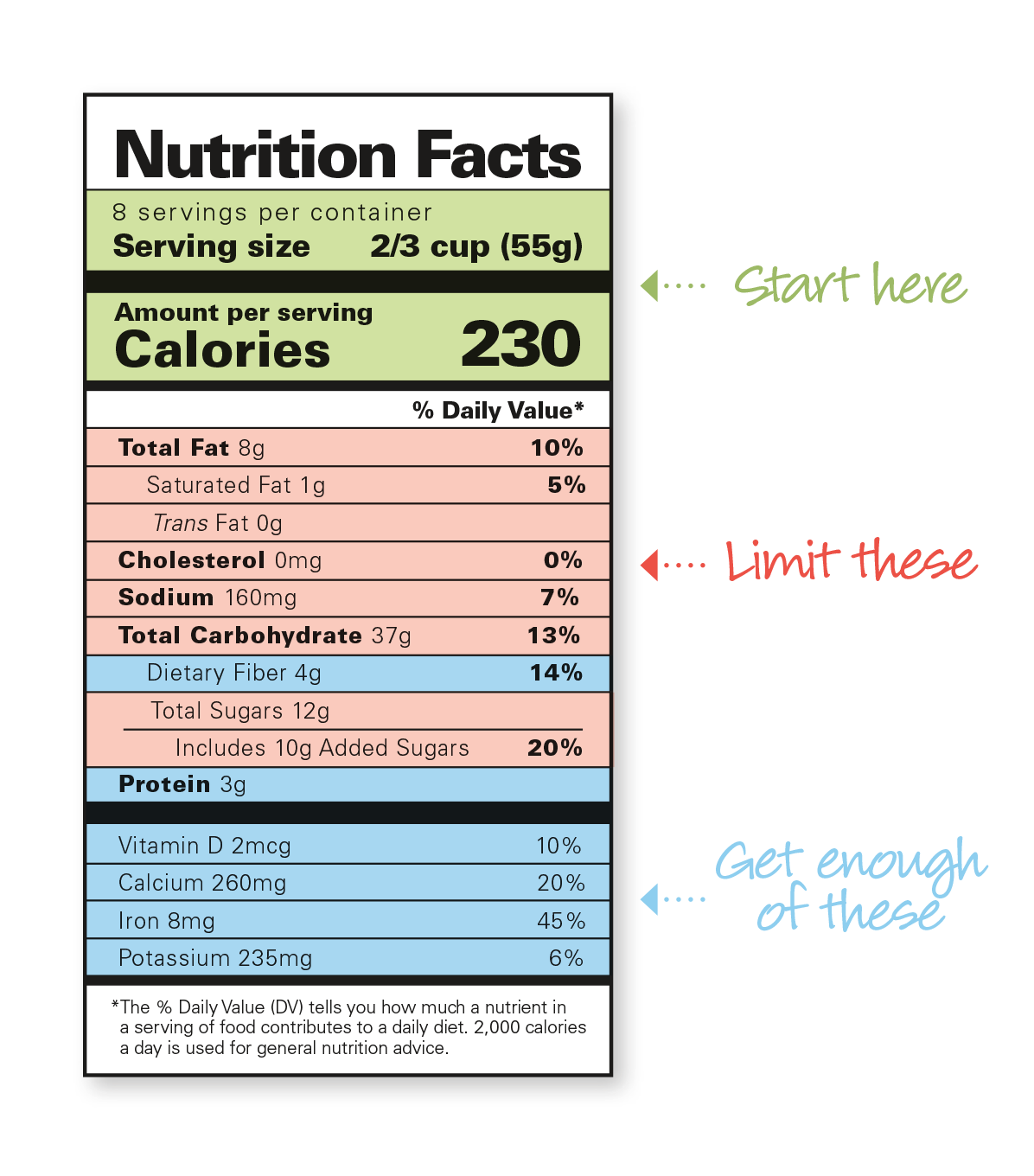

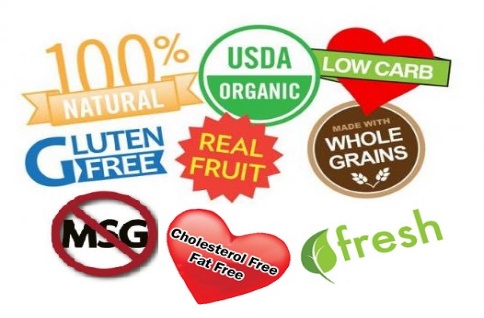
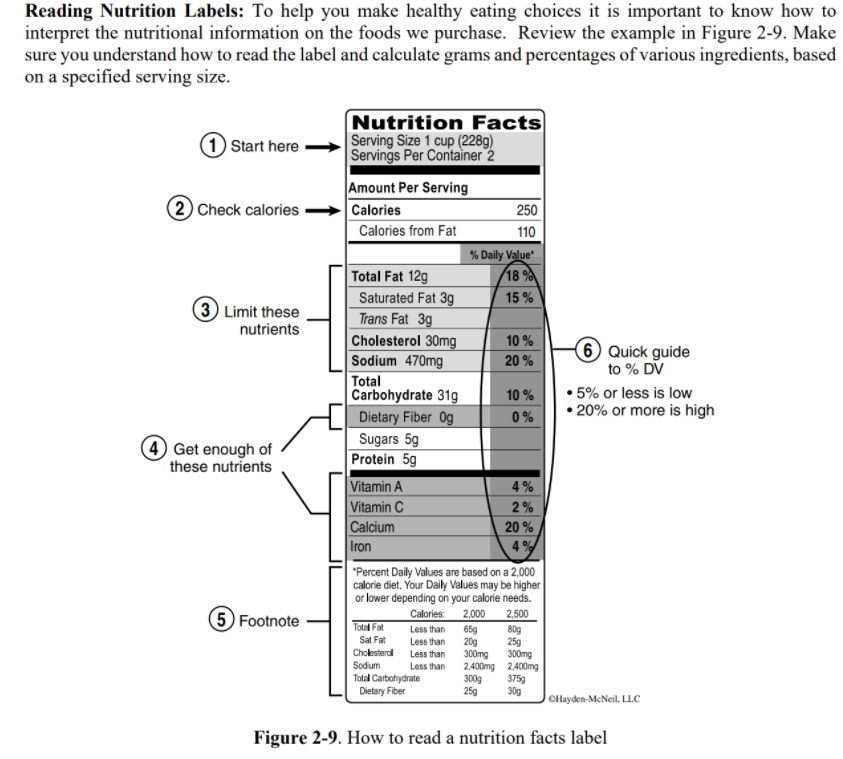



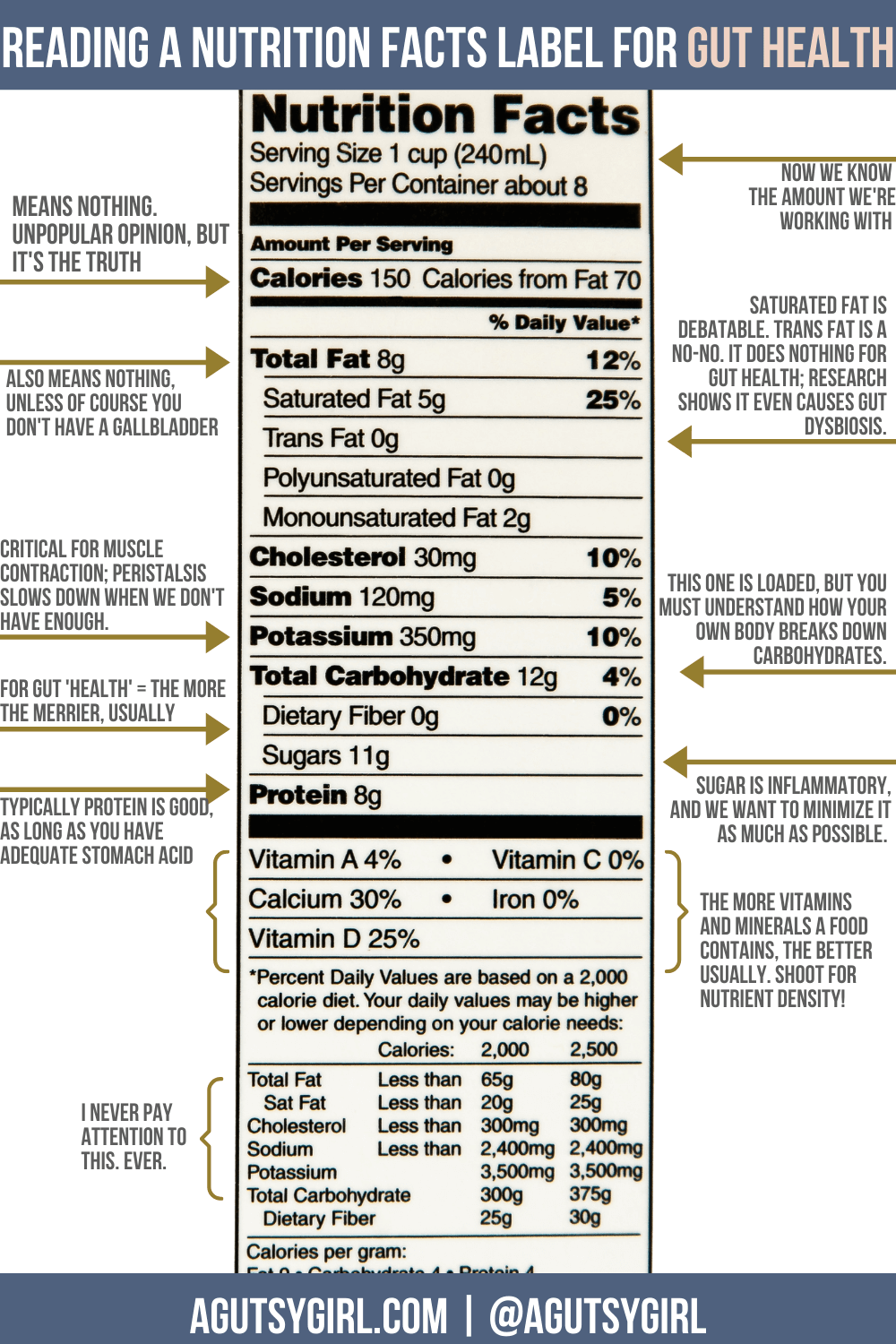


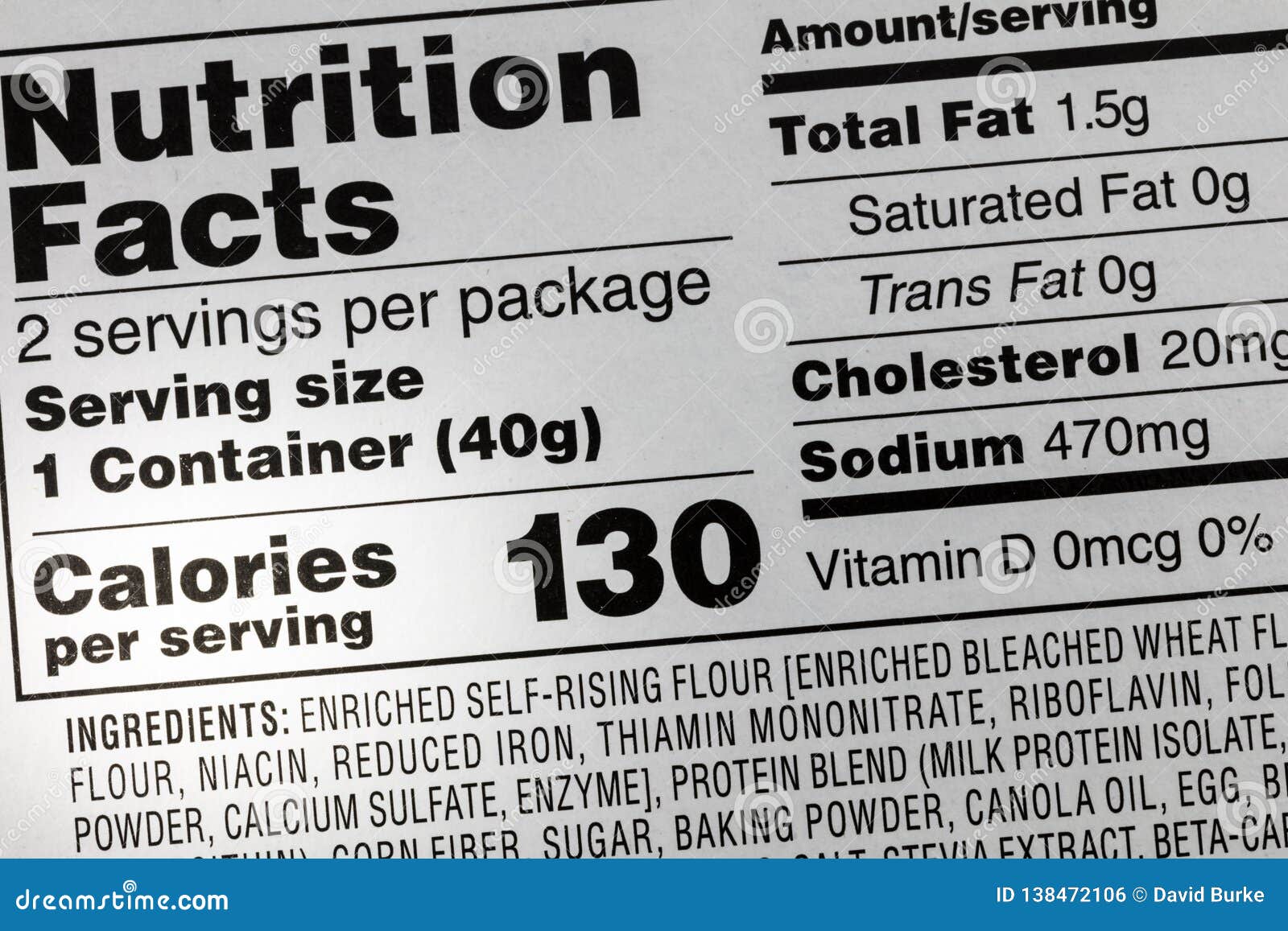

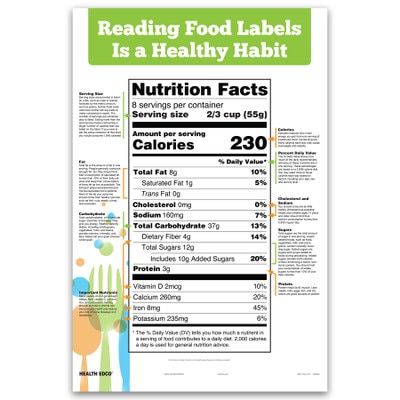


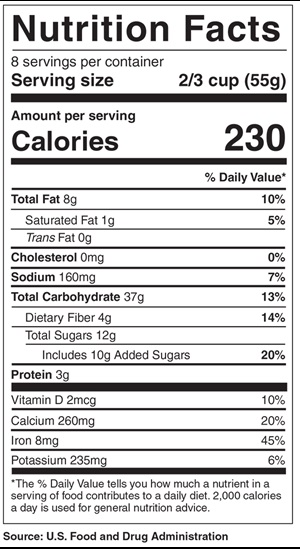
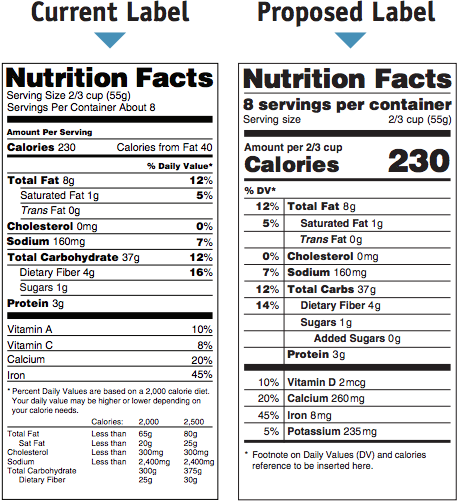

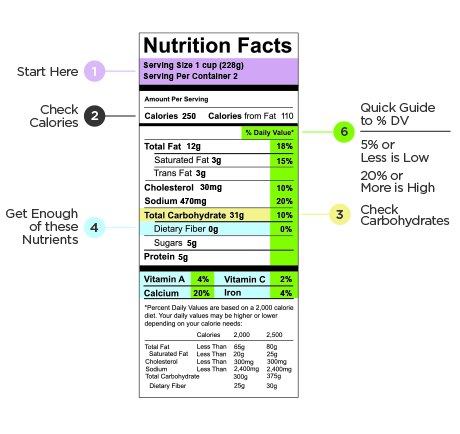
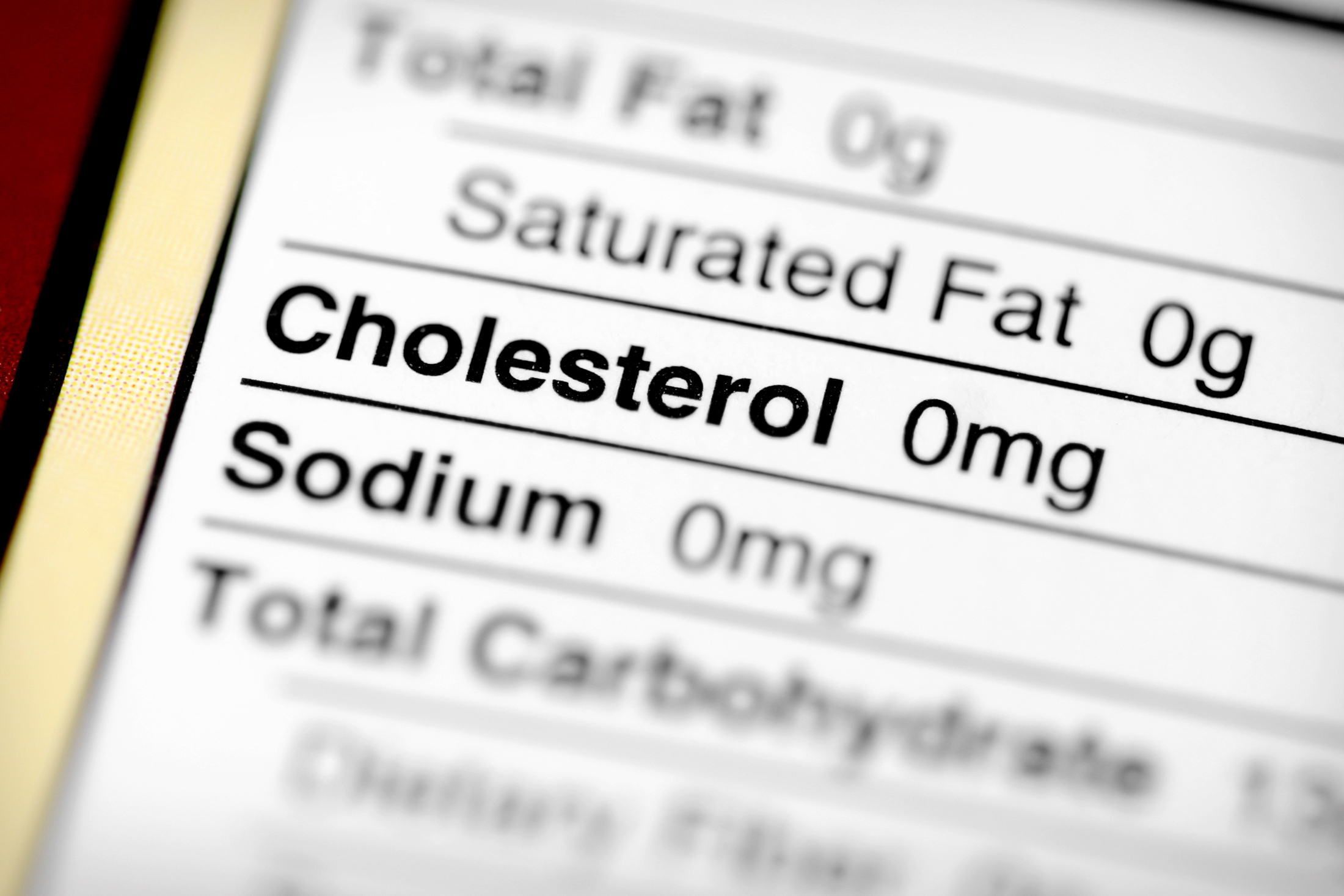
Post a Comment for "39 reading food labels cholesterol"